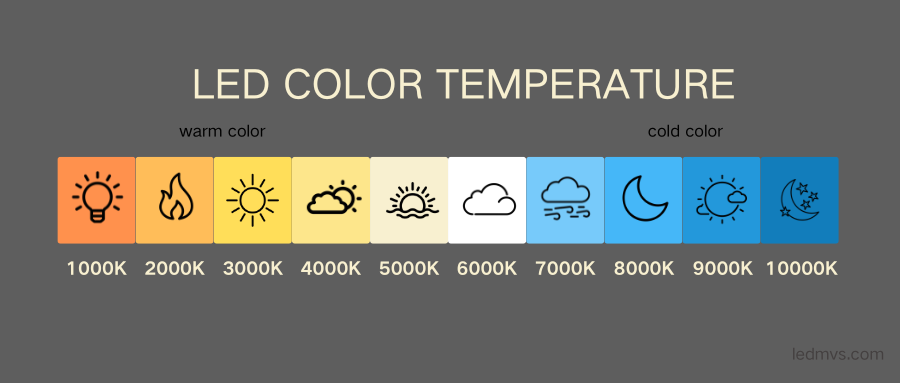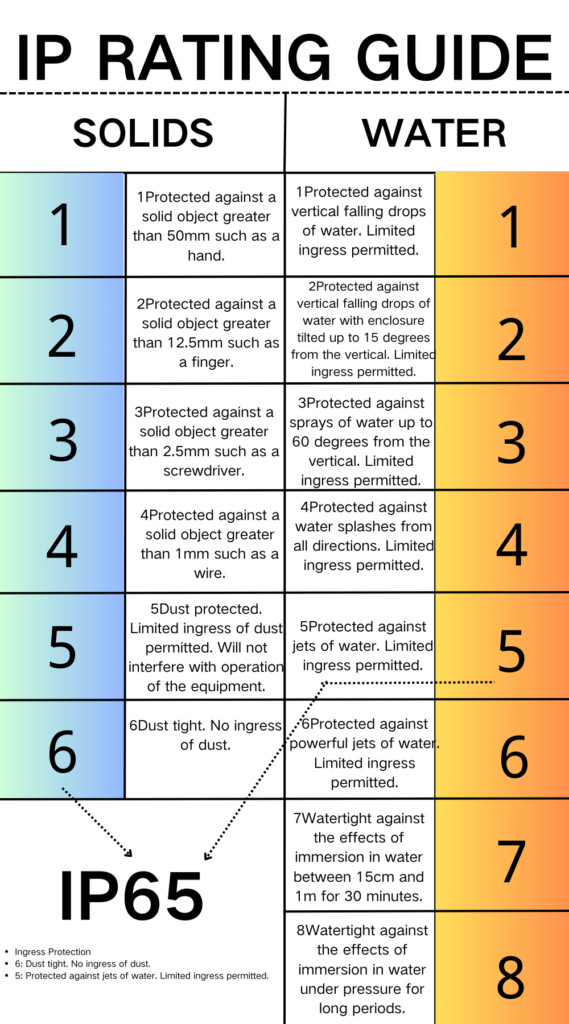Introduction
Proper lighting in parking lots is not just a matter of convenience but a critical factor in safety, security, and efficiency. Choosing the right lighting solution can significantly impact the parking experience for both drivers and pedestrians. Among the various options available, LED lights have become the go-to choice due to their superior energy efficiency, durability, and enhanced safety features. This article aims to guide you through the process of selecting the best LED lights for your parking lot, ensuring optimal performance while minimizing operational costs.

Part 1: Understanding the Basics of LED Lights
1.1 How LED Lights Work
LED (Light Emitting Diode) technology is a solid-state lighting solution that produces light when an electrical current passes through a semiconductor material. Unlike traditional lighting technologies, such as halogen or fluorescent lamps, LEDs do not rely on a filament or gas to produce light. This makes them more efficient, longer-lasting, and less prone to damage.
1.2 Key Advantages of LED Lights
- Energy Efficiency: LEDs consume less power than conventional lights, leading to significant savings on electricity bills. Their high efficiency ensures that more energy is converted into light rather than heat.
- Longevity: LED lights have a much longer lifespan than traditional lights, reducing the frequency of replacements. This is especially beneficial for parking lots, where maintenance can be costly and time-consuming.
- Eco-Friendly: LED lights are free of hazardous materials like mercury, making them safer for both the environment and workers. Their energy-saving properties also help reduce the overall carbon footprint.
Part 2: Evaluating Your Parking Lot’s Lighting Needs
2.1 Define Your Lighting Objectives
Before selecting LED lights, it’s essential to determine the primary objectives for your parking lot lighting:
- Safety: Proper lighting helps prevent accidents and criminal activities by providing adequate visibility, reducing dark spots where crimes may occur.
- Visibility: Clear visibility is critical for both drivers and pedestrians. Well-lit parking areas ensure that vehicles and pedestrians can navigate safely, avoiding collisions.
2.2 Consider Your Parking Lot’s Layout and Size
The layout and size of your parking lot will directly influence the type and placement of lighting fixtures:
- Open-Air vs. Enclosed: Open parking lots may require different lighting strategies than multi-story or enclosed parking structures. Open areas may need high-mounted lights, while enclosed structures may benefit from wall-mounted or lower-level fixtures.
- Size and Density: Larger parking lots with more spaces will require a greater number of fixtures, with considerations for uniform light distribution and minimizing dark spots.
Part 3: Choosing the Right Type of LED Lights
3.1 Overview of Fixture Types
- High-Mast Lights vs. Low-Mount Lights: High-mast lights are suitable for large, open parking lots, offering broad coverage from tall poles. Low-mount lights are better for smaller areas or multi-level structures.
- Flood Lights vs. Area Lights: Floodlights provide intense, wide-area illumination, ideal for large spaces, while area lights are typically used for more focused lighting on specific zones.
3.2 Choosing Light Intensity and Color Temperature
- Light Intensity: Light intensity is measured in lumens (lm), while illuminance is measured in lux (lx). The higher the lumens, the brighter the light, which is crucial for ensuring safety in the parking lot.
- Color Temperature: LED lights come in different color temperatures, typically ranging from warm white (3000K) to daylight (5000K). A cooler color temperature (4000K or higher) is often preferred for outdoor areas to enhance visibility and create a secure, bright atmosphere.

Part 4: Assessing Product Quality and Performance
4.1 Verify Certifications and Standards
- Energy Efficiency Certification: Look for certifications such as Energy Star, which ensures that the lights meet strict energy efficiency standards, contributing to lower operating costs. Learn more about Energy Star here.
- Ingress Protection (IP) Rating: For outdoor environments, it is crucial to choose LED lights with appropriate IP ratings (e.g., IP65 or higher) to ensure they are resistant to dust, water, and extreme weather conditions. This will help ensure the lights function reliably in various outdoor environments and climates.

4.2 Check Manufacturer Reputation and Warranty Policies
- Reliable Suppliers: When purchasing LED lights, it’s essential to choose reputable manufacturers known for producing high-quality, durable products.
- Warranty: A long warranty period is a good indicator of the manufacturer’s confidence in their product. The warranty can help mitigate risks related to premature failure or performance issues.
Part 5: Installation and Maintenance Tips
5.1 Installation Preparation
- Location and Mounting Height: Ensure that you choose appropriate mounting locations and heights for the lights. High-mast lights should be placed at optimal heights to ensure broad, uniform coverage.
- Electrical Safety: Prior to installation, conduct a thorough electrical inspection to ensure all wiring and connections meet local safety standards and regulations.
5.2 The Importance of Regular Maintenance
- Routine Cleaning and Inspections: Regularly clean the light fixtures to maintain optimal brightness and efficiency. Inspect for any wear or damage that could affect performance.
- Fault Diagnosis and Replacement Plans: Develop a maintenance schedule to identify and address potential faults before they lead to complete fixture failure.
Conclusion
Choosing the right LED lights for your parking lot is essential for ensuring safety, security, and cost-efficiency. By understanding the basic principles of LED lighting, assessing your parking lot’s specific needs, and carefully selecting high-quality fixtures, you can significantly improve the lighting environment. With proper installation and regular maintenance, your parking lot lighting will not only meet safety standards but also provide long-term, sustainable benefits.
Appendix (Optional)
- Recommended Brands and Products:learn morn about trusted LED lighting suppliers and specific product recommendations
FAQ: Frequently Asked Questions
FAQ: Frequently Asked Questions
1. How do I know how many LED lights my parking lot needs?
The number of LED lights you need depends on several factors, including the size of the parking lot, the layout, and the lighting intensity required. For open-air lots, high-mast lights provide broad coverage. For smaller or multi-story lots, wall-mounted or lower-mounted lights are suitable. You can consult with a lighting professional to calculate the number of fixtures required for adequate illumination based on your parking lot’s dimensions and layout.
Learn more about calculating lighting needs in our detailed guide.
2. What is the ideal color temperature for parking lot lights?
For parking lots, a color temperature between 4000K and 5000K is ideal. This range provides bright, clear light that enhances visibility and creates a secure environment. Cool white light (5000K) is especially suitable for larger open-air spaces, while warmer temperatures (4000K) can be effective in smaller, enclosed areas.
Check out our article on color temperatures for lighting.
3. What is the difference between floodlights and area lights for parking lots?
Floodlights are designed for high-intensity, wide-area illumination, making them ideal for large, open parking lots. Area lights, on the other hand, are better suited for smaller, more confined spaces, offering more focused illumination over specific areas, such as aisles or pedestrian walkways.
4. Are LED lights really more cost-effective than traditional lighting?
Yes, LED lights are significantly more energy-efficient than traditional lighting technologies, such as halogen or fluorescent bulbs. They consume less electricity, last longer, and require fewer replacements, making them a cost-effective solution over the long term. In addition, they reduce your carbon footprint and contribute to sustainability efforts.
5. Do I need to consider the weather when selecting LED lights for outdoor parking lots?
Yes, outdoor LED lights should have a high Ingress Protection (IP) rating, such as IP65 or higher, to ensure they are resistant to dust, water, and extreme weather conditions. This will help ensure the lights function reliably in various outdoor environments and climates.
For more on selecting the right IP rating, read our post on weather-resistant lights.
6. How often should parking lot lights be maintained?
Regular maintenance is essential to keep your lighting system functioning optimally. Clean the fixtures at least every six months to remove dust, dirt, and debris that could obstruct light output. Inspect the lights periodically for wear and damage, and replace any faulty components as needed.
7. What warranty should I look for when purchasing LED lights?
Look for LED lights with a warranty of at least 5 years. A longer warranty indicates that the manufacturer stands behind the quality and durability of their product. Ensure that the warranty covers defects in materials and workmanship, as well as performance issues that may arise over time.

